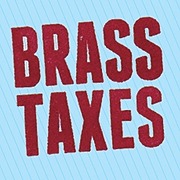Buying, Owning, and Selling a Home
Things to Consider When Selling Your Home
When you're getting ready to sell a home, you're gonna want to make sure you've got your ducks (and by ducks, we mean paperwork) in a row. Here's some info on the info we need for your taxes.
Updated 5 days ago
One of the major benefits of owning a home is that when you sell it the government gives you a huge break on how much of the profit you pay taxes on. If you are single and you owned and lived in the house for at least two of the five years before the sale, then up to $250,000 of profit is tax-free. If you're married and file a joint return, up to $500,000 of the profit is tax-free if one spouse (or both) owned the house as a primary home for two of the five years before the sale, and both spouses lived there for two of the five years before the sale.
You can use this exclusion more than once. In fact, you can use it every time you sell a primary home, as long as you owned and lived in it for two of the five years leading up to the sale and have not used the exclusion for another home in the last two years. If your profit exceeds the $250,000/$500,000 limit, the excess is reported as a capital gain.
In certain cases, you can treat part or all of your profit as tax-free, even if you don't pass the two-out-of-five-year tests. A partial exclusion is available if you sell your home "early" because of a change of employment, a change of health, or because of other unforeseen circumstances, such as a divorce or multiple births from a single pregnancy.
What we mean by a partial exclusion is that if you qualify under one of the exceptions and, for example, have lived in the house for one of the five years before you sell, then you can exclude up to $125,000 of profit if you're single or $250,000 if you're married (i.e. 50% of the exclusion of those who meet the two-out-of-five-year test).
Unfortunately, as the tax code is currently written, if you sell for a loss, you cannot take a deduction for the loss.
Figuring Out Your Profit
Here's a very simplified version of how we calculate the profit when you sell your home:
Original Purchase Price + Any Capital Improvements - Any Business Deprecation of the Home = Profit
A couple notes on the above:
The original purchase price includes any amount you paid for furniture or appliances included in the sale, as well as sale expenses like realtor and legal fees. Here's a more in-depth breakdown of what numbers to include
To figure out your capital improvements total, check out this article
To figure out what we mean by business depreciation, read this article (we can also help you with this in our tax appointment)
You will likely also receive form 1099-S when you sell a home, which is important information for your tax preparer to have.
A Note on Social Justice Issues and Homeownership
Buying and selling real estate is arguably one of the easiest ways to build wealth in the US, thanks in part to this $250,000 - $500,000 exclusion. Getting to keep up to that amount in profit, and having any additional amount taxed at capital gains rates (which can be significantly lower than normal income tax rates) is hugely beneficial. This is a big reason why homeownership is a way to build exponential and generational wealth in America.
But what about people who sell their homes at a loss? Is there any tax help for them? No. Not in the current tax code. You cannot deduct a loss from a home sale on your taxes.
Which begs the question, who are the people most likely to sell their homes as a gain and who are the ones more likely to end up with a loss?
Thanks in part to the racist redlining practices of 20th century, when it comes to profiting from a home sale, white people are more likely to gain, while BIPOC folks are more likely to end up with a loss.
For those new to the concept, redlining is when the federal government, lenders, and real estate lobbyists would draw a literal red line on a map around the neighborhoods that they would not invest in based on demographics alone, specifically excluding neighborhoods that were majority Black. This happened in cities across the nation. In 1996, homes in redlined neighborhoods were worth less than half the amount of the homes in area the government deemed “best” for mortgage lending. In other words, homes in Black neighborhoods were typically worth less than half of homes in white neighborhoods, and that disparity has only grown greater in the past couple decades.
Want to learn more about this and other ways the current tax code reinforces inequality? We highly recommend Dorothy A. Brown's book The Whiteness of Wealth. Here's a relevant quote:
"Picking where you live is a matter of personal choice, but these choices are reinforced by a legacy of racism. White families typically prefer to live in predominantly white neighborhoods with very few or no Black neighbors. Homes in these neighborhoods tend to have the highest market values because most prospective purchasers—who happen to be white—find them most desirable. Black Americans, on the other hand, tend to prefer to live in racially diverse or all-Black neighborhoods… Research has shown that once more than 10 percent of your neighbors are Black, the value of your home declines. As the percentage of Black neighbors increases, the property’s value plummets even further… It's a matter of personal choice—who you want your neighbors to be—but tax policies reward most white taxpayers' personal choices and punish those made by Black ones."

